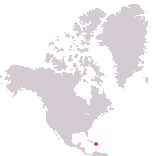Home > North America > Haiti

Republic of Haiti
République d'Haïti
Repiblik Ayiti
République d'Haïti
Repiblik Ayiti
Government type Semi-presidential republic
Area 27,750 km² (10,714 sq mi)
Population 11,867,000 inh. (2024 est.)
Population density 428 inh/km² (1,108 inh/mi²)
Area 27,750 km² (10,714 sq mi)
Population 11,867,000 inh. (2024 est.)
Population density 428 inh/km² (1,108 inh/mi²)
Capital Port-au-Prince (978,000 pop., 1,712,000 urban aggl.)
Currency Haitian gourde
Human development index 0.535 (163rd place)
Languages French, Haitian Creole (both official)
Life expectancy M 62 years, F 68 years
Currency Haitian gourde
Human development index 0.535 (163rd place)
Languages French, Haitian Creole (both official)
Life expectancy M 62 years, F 68 years
GEOGRAPHY DATA OF HAITI
Largest cities
Port-au-Prince 978,000 pop., 1,712,000 urban aggl.
Carrefour 502,000 pop.
Delmas 395,000 pop.
Pétion-Ville 328,000 pop.
Gonaïves 279,000 pop.
Cité Soleil 265,000 pop.
Highest mountains
Pic La Selle 2,680 m (8,793 ft)
Longest rivers
Artibonite 320 km (199 mi)
Largest lakes
Étang Saumâtre 170 km² (66 sq mi)
Largest islands
Hispaniola 76,192 km² (29,418 sq mi) total, including the Dominican Republic section
Gonâve Island 743 km² (287 sq mi)
Tortuga 180 km² (69 sq mi)
Île-à-Vache 52 km² (20 sq mi)
Grand Cayemite 43 km² (17 sq mi)
ADMINISTRATIVE DIVISIONS OF HAITI
Haiti is administratively divided into 10 departments, with those of the Ouest and Artibonite being both the two largest, both with an area close to 5,000 km², and the most populated, with the first hosting over 1/3 of the population, thanks to the presence of the capital and its suburbs.According to 2009 estimates, the capital Port-au-Prince was not very far from one million inhabitants, abundantly exceeded with other important cities located in its urban area; almost all the major urban centers are located along the coast.

